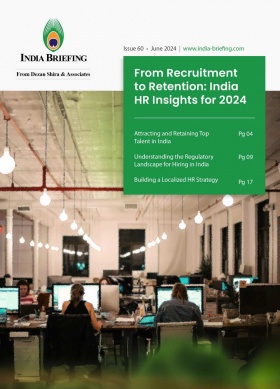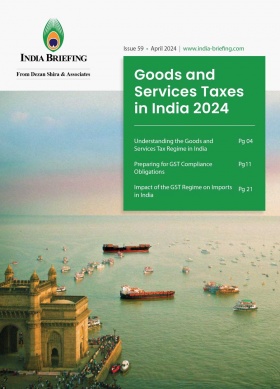More Women Engaged in Manufacturing Activities in India: MoSPI Report
In metropolitan India, a higher percentage of female workers than male workers are engaged in manufacturing and other service industries. As per a recent report, women still hold a dominant position in the agriculture industry in rural areas and are increasingly involved in manufacturing activities in urban areas.
In the latest report released by India’s Ministry of Statistics and Programme Implementation (MoSPI), more women in India are now engaged in the manufacturing and service sectors. According to the “Women and Men in India, 2023″ report, in rural areas, women overwhelmingly dominate the agricultural sector, with 76.2 percent of rural female workers involved, compared to 49.1 percent of rural male workers.
The report bases its findings on data from the annual Periodic Labour Force Surveys (PLFS). An economy’s labor force participation rate (LFPR), which promotes better and more steady growth, is a crucial indicator.
Pan-India workforce engagement
The percentage of all persons of working age who are employed or looking for employment is shown by the LFPR. The rate does not include people like students, retirees, housewives, and those who are neither employed nor seeking employment.
|
Broad industry division |
Rural |
Urban |
||
|
|
Male |
Female |
Male |
Female |
|
Agriculture |
49.1 |
76.2 |
4.7 |
11.7 |
|
Mining & Quarrying |
0.4 |
0.1 |
0.6 |
0.1 |
|
Manufacturing |
8.2 |
8.3 |
20.5 |
23.9 |
|
Electricity, water, etc. |
0.5 |
0.1 |
1.3 |
0.5 |
|
Construction |
19.0 |
4.2 |
12.6 |
3.1 |
|
Trade, hotel & restaurants |
10.5 |
4.1 |
26.5 |
15.2 |
|
Transport, storage & communication |
5.3 |
0.2 |
13.2 |
5.5 |
|
Other services |
7.0 |
6.9 |
20.6 |
40.1 |
Source: Periodic Labour Force Survey (PLFS), July 2022- June 2023, NSO
It can also be seen that in the agricultural sector and other services, more women were engaged as compared to men, whereas in construction, trade, hotels and restaurants, transport, storage, & communications, more men were engaged than women.
In India’s urban areas, a greater proportion of female workers, around 64 percent, are noted to be engaged in services and manufacturing activities, while a major proportion of male workers are engaged in trade, hotel and restaurant services, and other services.
|
Percentage Distribution of Workers in Usual Status* in the Manufacturing Sector |
||||
|
Labor force survey report |
Rural |
Urban |
||
|
|
Male |
Female |
Male |
Female |
|
PLFS (2017-18) |
7.7 |
8.1 |
22.4 |
25.2 |
|
PLFS (2018-19) |
7.3 |
9.0 |
21.9 |
24.5 |
|
PLFS (2019-20) |
7.3 |
7.3 |
20.3 |
22.4 |
|
PLFS (2020-21) |
7.7 |
7.4 |
19.5 |
23.0 |
|
PLFS (2021-22) |
7.9 |
7.9 |
21.5 |
24.3 |
|
PLFS (2022-23) |
8.2 |
8.3 |
20.5 |
23.9 |
Source: Periodic Labor Force Survey (PLFS), NSO
*Usual status comprises two economic activities. ‘PS’ which is the principal status where an individual is engaged in economic activity consistently and ‘SS’ which is the subsidiary status where the same economic activities are performed in uneven periods.
|
Percentage Distribution of Workers in Usual Status by Broad Status in Employment (2022-23) |
||||
|
Nature of employment |
Rural |
Urban |
||
|
|
Male |
Female |
Male |
Female |
|
Own account worker, employer |
47.8 |
27.9 |
34.7 |
27.6 |
|
Helper in household enterprise |
11.0 |
43.1 |
4.7 |
12.8 |
|
Regular wage/salary |
14.3 |
8.0 |
47.1 |
50.8 |
|
Casual labor |
26.8 |
21.0 |
13.6 |
8.9 |
Source: Periodic Labor Force Survey (PLFS), NSO
In terms of employment status, a greater percentage of women than men are in regular wage or salary employment in the urban areas of the country. However, 43.1 percent of rural women were helpers in household enterprises, compared to just 11 percent of men.
Hurdles for women’s workforce participation
Despite advances, the report emphasizes that women continue to face significant challenges in entering the workforce and securing quality employment. It also highlights that women earn less than men, with the wage gap more pronounced in urban areas. Data from the PLFS for the April-June 2023 quarter shows that rural male casual laborers earned an average of INR 416 (US$4.16), while their female counterparts earned INR 287 (US$3.42). In urban areas, male casual workers earned INR 515 (US$6.13) on average, compared to INR 333 (US$3.97) for female casual workers.
|
Average Age Earned per Day by Casual Laborers in Work Other Than Public Works (Value in INR) |
||||
|
Quarterly |
Rural |
Urban |
||
|
|
Male |
Female |
Male |
Female |
|
Jul.-Sep 2022 |
437 (US$5.21) |
259 (US$3.09) |
488 (US$5.81) |
325 (US$3.87) |
|
Oct.-Dec. 2022 |
413 (US$4.93) |
270 (US$3.22) |
504 (US$6) |
336 (US$4) |
|
Jan.-Mar. 2023 |
413 (US$4.93) |
280 (US$3.34) |
507 (US$6.04) |
343 (US$4.09) |
|
Apr.-Jun. 2023 |
416 (US$4.16) |
287 (US$3.42) |
515 (US$6.13) |
333 (US$3.97) |
Source: Periodic Labour Force Survey (PLFS), July 2022- June 2023, NSO
The Worker Population Ratio (WPR) serves as a crucial indicator for evaluating a country’s employment landscape, offering insights into the proportion of the population actively engaged in the production of goods and services. In the fiscal year 2022-23, the WPR for the male population was 54 in rural areas and 55.6 in urban areas, while for the female population, it was significantly lower at 30 in rural areas and 18.7 in urban areas. The disparity between men and women remains pronounced, as indicated by the notable differences in the WPRs.
In terms unemployment, as of 2022-23, the rural female unemployment rate has consistently been lower than that of males. Conversely, in urban areas, female unemployment is higher than male unemployment.
|
Unemployment Rates in the Labor Force According to Usual Status (PS+SS**) (%) |
||||
|
Year |
Rural |
Urban |
||
|
|
Male |
Female |
Male |
Female |
|
2017-18 |
5.8 |
3.8 |
7.1 |
10.8 |
|
2018-19 |
5.6 |
3.5 |
7.1 |
9.9 |
|
2019-20 |
4.5 |
2.6 |
6.4 |
8.9 |
|
2020-21 |
3.9 |
2.1 |
6.1 |
8.6 |
|
2021-22 |
3.8 |
2.1 |
5.8 |
7.9 |
|
2022-23 |
2.8 |
1.8 |
4.7 |
7.5 |
Source: Periodic Labour Force Survey, NSO
**Usual principal status and subsidiary status of employment (PS+SS)
The report findings could suggest that the workforce dynamics are complex as there are more job opportunities accessible to women in agriculture and informal sectors in rural areas. Unemployment is highest among urban females aged 15-29, followed by urban males in the same age group.
|
Average Time (in Minutes) Spent in a Day per Person in Paid and Unpaid Activities |
||||
|
Age group |
Male |
Female |
||
|
|
Paid |
Unpaid |
Paid |
Unpaid |
|
15-29 years |
227 |
54 |
42 |
330 |
|
15-59 years |
305 |
74 |
68 |
364 |
|
60+ years |
157 |
98 |
38 |
240 |
Source: Time Use Survey 2019**
**Time use surveys capture the allocation of time to various activities, whether paid or unpaid. It serves to measure this hidden aspect of women’s contributions. The significance of time use statistics is underscored by the Sustainable Development Goal (SDG) target.
The data underscores that a significant number of working-age women spend over six hours daily on unpaid services, potentially restricting their access to paid employment. Women not in the labor force invest the most time in unpaid domestic services, hinting at a possible impediment to their involvement in paid work.
Possible ways to increase women’s participation in paid activities
The participation of women in the labor force and their ability to secure decent work are crucial components of an inclusive and sustainable development process. Despite progress, women in India still encounter numerous barriers when entering the labor market and seeking access to quality employment.
The latest report released by MoSPI suggests that the substantial disparity between male and female representation in the workforce can be mitigated through strategic measures, such as the implementation of improved incentive mechanisms, targeted training programs, job reservations, and the establishment of safe workplace environments.
(US$1 = INR 83.95)
About Us
India Briefing is one of five regional publications under the Asia Briefing brand. It is supported by Dezan Shira & Associates, a pan-Asia, multi-disciplinary professional services firm that assists foreign investors throughout Asia, including through offices in Delhi, Mumbai, and Bengaluru in India. Readers may write to india@dezshira.com for support on doing business in India. For a complimentary subscription to India Briefing’s content products, please click here.
Dezan Shira & Associates also maintains offices or has alliance partners assisting foreign investors in China, Hong Kong SAR, Dubai (UAE), Indonesia, Singapore, Vietnam, Philippines, Malaysia, Thailand, Bangladesh, Italy, Germany, the United States, and Australia.
- Previous Article Newly Sanctioned India Railway Projects Expected to Boost Connectivity, Improve Logistics
- Next Article India’s Draft Personal Data Protection Rules Likely to be Released Within a Month








